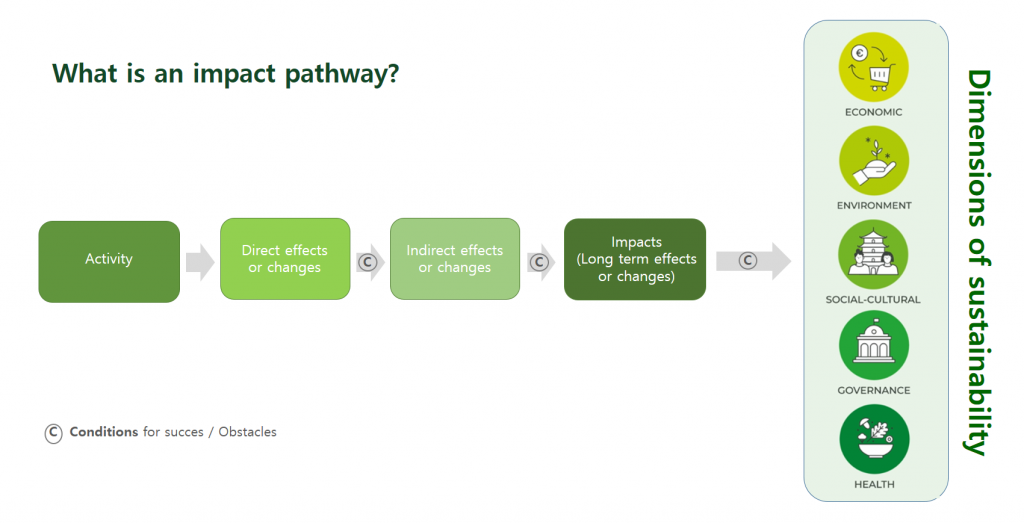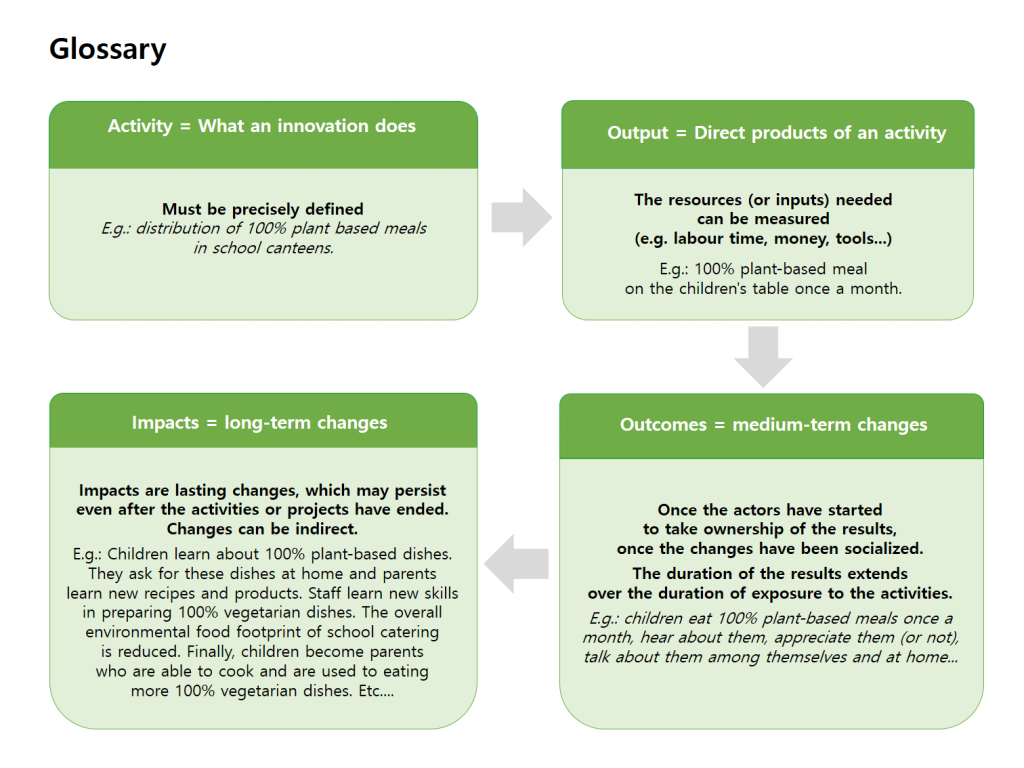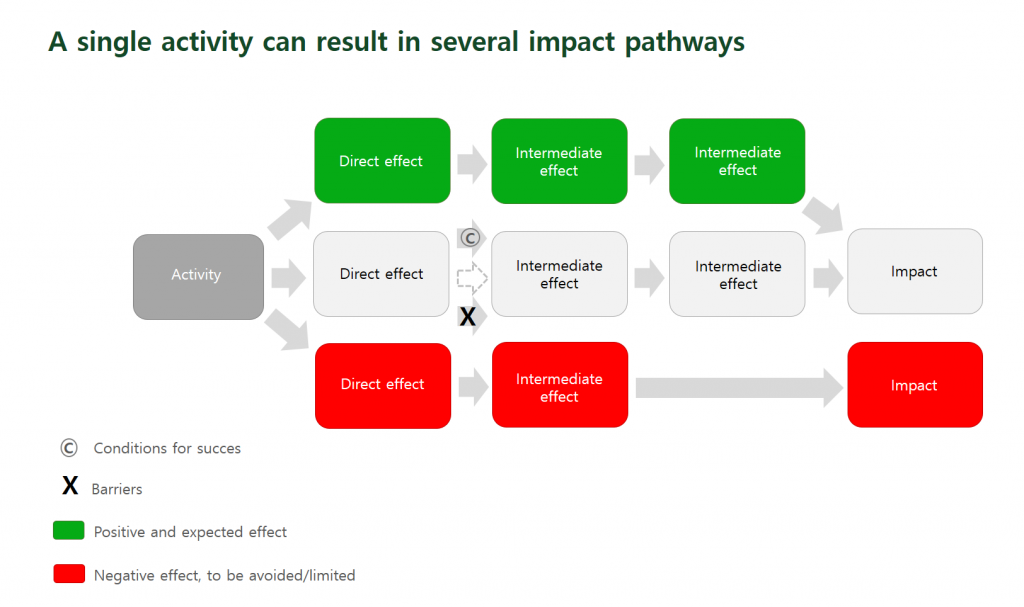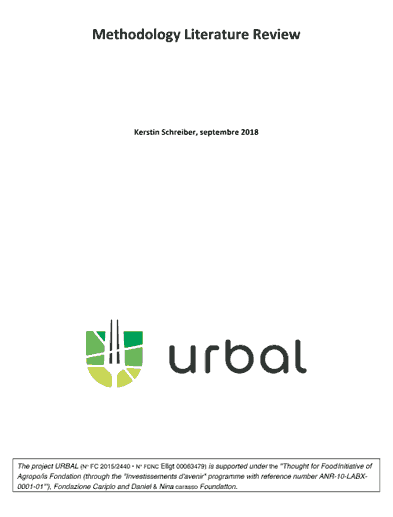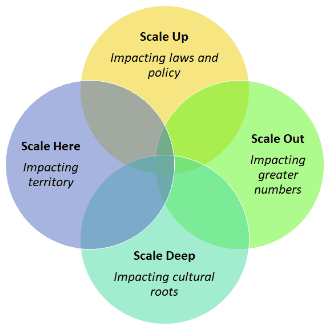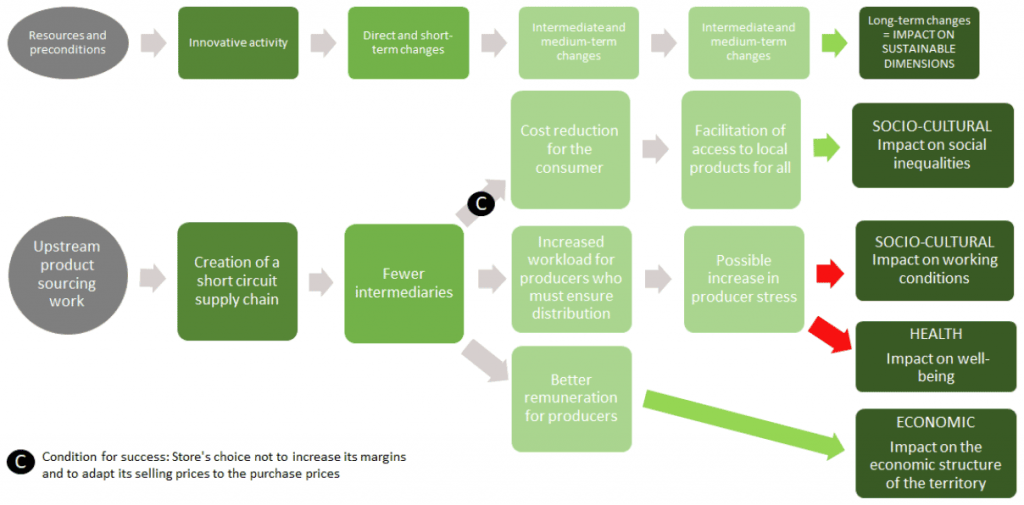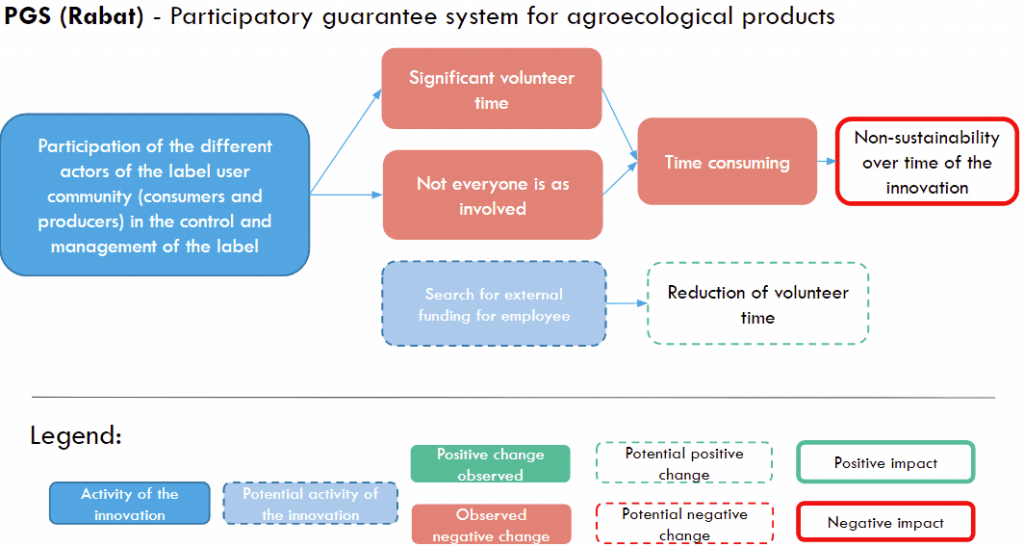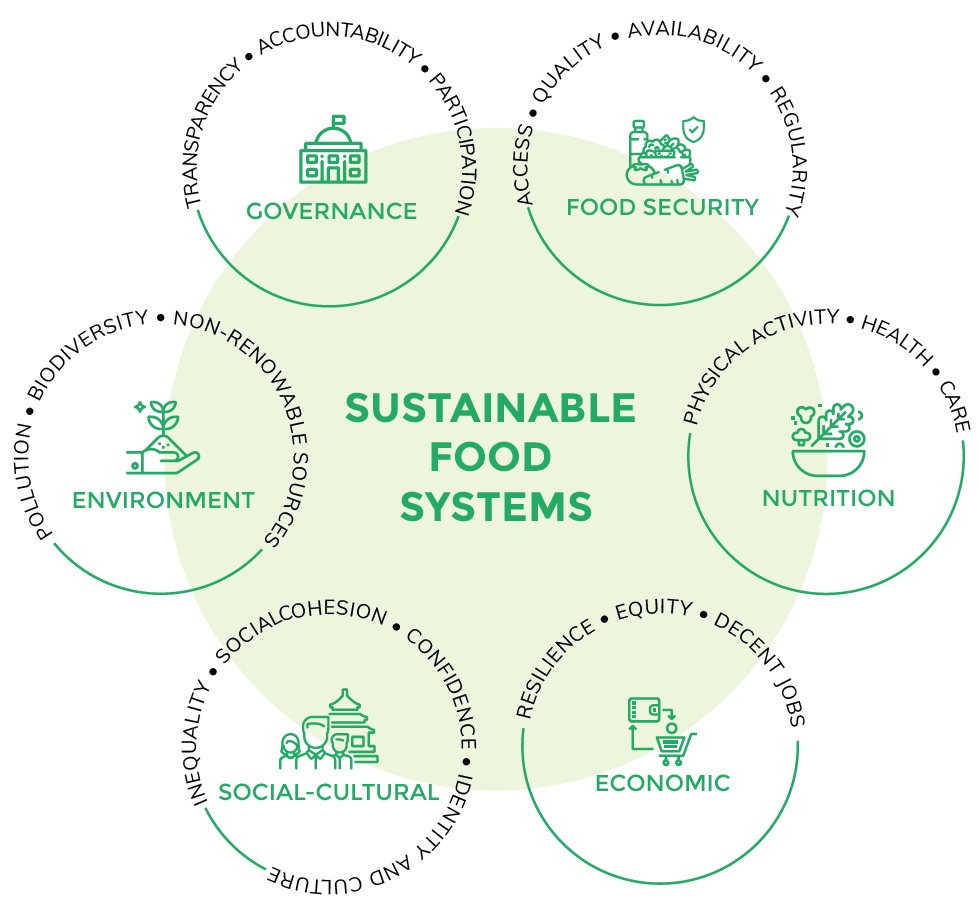The aim of the Urbal methodology is to help disentangle the goals and strategies that help make an innovation more sustainable, not necessarily to measure its impact. That is why Urbal suggests working with impact pathway mapping, which aims to answer the question of how and why an impact has occurred over time.
An impact pathway map is a diagram that maps how an activity can generate short-term and medium-term changes to achieve long-term changes also called impacts.
To understand how your innovation might have produced impacts on sustainability, the Urbal approach encourages you to ask: what has changed since the innovation began? What changes produced the activities you developed in order to meet your goals?
- Activities are actions associated with delivering the innovation goals. In other words, they are what is actually done in order to achieve the aims of the initiative.
- Outputs are the direct immediate term results associated with a project. In other words, they are usually what the project has achieved in the short term.
- Outcomes refer to the medium term consequences of the innovation. They usually relate to the innovation goal.
- Impacts are the long term consequences of a project.
There are multiple possible pathways leading an activity to one or multiple impacts on sustainability. Impact pathway mapping helps disentangling the multiple cause and effect relationships that have led to change.
These pathways are not necessarily linear constructs: the interrelation, convergence, potential divergency between the various changes and pathways towards the different dimensions of sustainability, also build a systemic theory of change, emphasizing positive and negative feedback loops, unforeseen changes and unforeseen contradictions between pathways, which we believe are particularly relevant to address the issue of the sustainable food systems.











